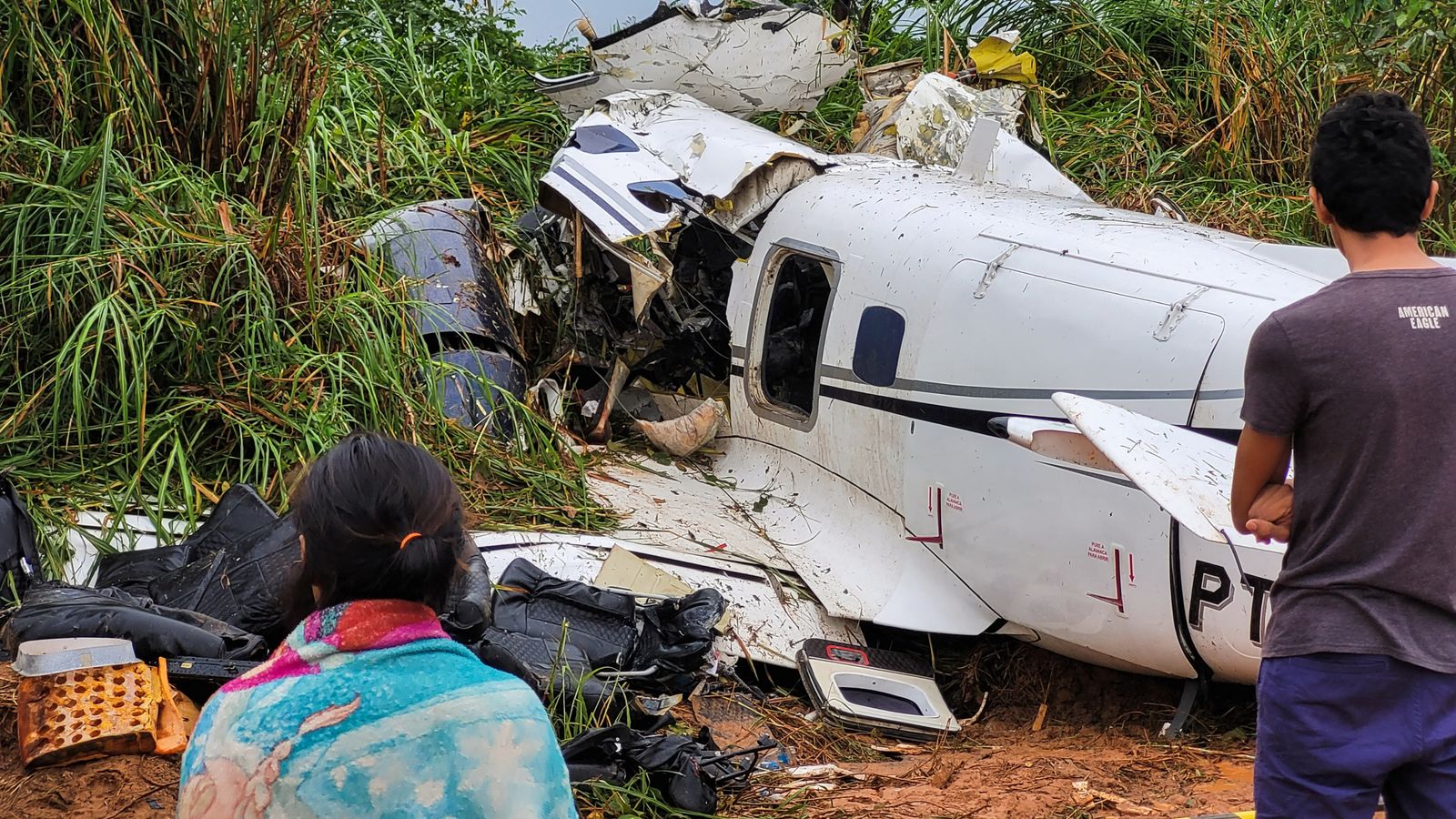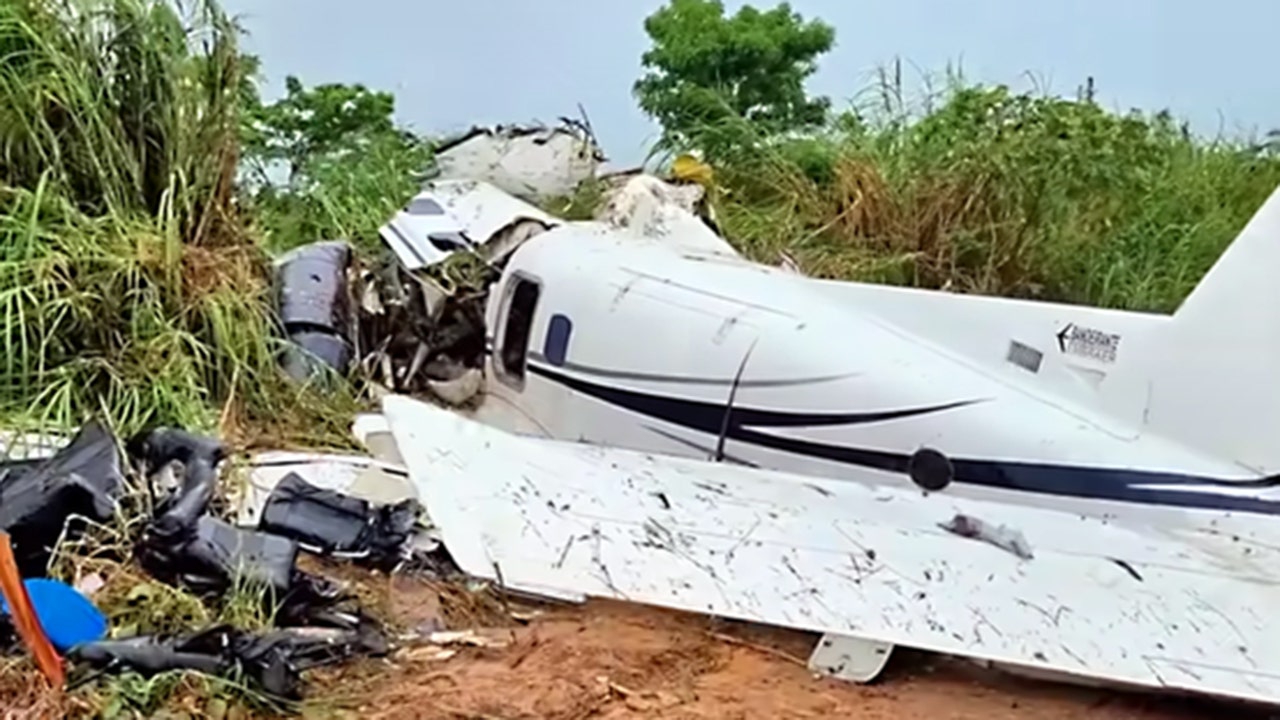Historical Context of Plane Crashes in Brazil

Brazil has a long and sometimes tragic history of plane crashes. From early aviation pioneers to modern commercial flights, these events have left a lasting impact on the country. Understanding the history of plane crashes in Brazil is crucial for recognizing the evolution of aviation safety regulations and the ongoing efforts to prevent such tragedies.
Notable Plane Crashes in Brazil
This section explores some of the most significant plane crashes in Brazil, highlighting their impact and the lessons learned.
- 1946: The Cruzeiro do Sul Disaster – On January 2, 1946, the Lockheed Constellation L-049A, operated by Cruzeiro do Sul, crashed near the Azores Islands, killing all 29 passengers and crew members. This incident was one of the deadliest aviation accidents in history at the time, and it shook the country, prompting calls for increased safety measures in the burgeoning Brazilian aviation industry.
- 1973: The Varig Flight 820 Crash – On November 3, 1973, a Boeing 707-320C operated by Varig crashed near Paris, killing all 113 passengers and crew members. The investigation revealed that the crash was caused by a fire in the cargo hold, highlighting the importance of fire safety protocols and the need for rigorous maintenance inspections.
- 1982: The TAM Flight 352 Crash – On January 16, 1982, a Fokker F27 Friendship operated by TAM Airlines crashed near São Paulo, killing all 51 passengers and crew members. The investigation concluded that the crash was caused by a combination of factors, including pilot error and mechanical failure, emphasizing the importance of thorough pilot training and aircraft maintenance.
- 2006: The Gol Transportes Aéreos Flight 1907 Crash – On September 29, 2006, a Boeing 737-800 operated by Gol Transportes Aéreos collided with a Legacy 600 business jet over the Amazon rainforest, killing all 154 passengers and crew members on board the Gol aircraft. This incident was one of the deadliest aviation accidents in Brazil’s history and led to significant changes in air traffic control procedures and the implementation of collision avoidance technologies.
Evolution of Aviation Safety Regulations in Brazil
Brazil has made significant progress in aviation safety over the years, implementing stricter regulations and adopting international standards. This section examines the evolution of aviation safety regulations in Brazil, highlighting key milestones and their impact.
- Early Years (1920s-1940s) – During the early years of aviation in Brazil, safety regulations were relatively lax. However, the 1946 Cruzeiro do Sul disaster prompted the government to establish the National Civil Aviation Agency (ANAC) in 1946. ANAC was responsible for regulating and overseeing the aviation industry, establishing minimum safety standards for aircraft, pilots, and airports.
- Post-1970s – The 1970s saw a significant increase in air travel in Brazil, leading to the development of more stringent safety regulations. This included the introduction of new aircraft certification requirements, pilot training standards, and air traffic control procedures. Brazil also joined the International Civil Aviation Organization (ICAO), adopting its safety standards and participating in international efforts to improve aviation safety.
- 21st Century – In the 21st century, Brazil has continued to strengthen its aviation safety regulations, implementing advanced technologies and best practices. This includes the adoption of the European Aviation Safety Agency (EASA) standards, the implementation of the Aviation Safety Action Program (ASAP), and the introduction of new technologies like the ADS-B system for air traffic management.
Causes of Plane Crashes in Brazil Compared to Global Trends
This section examines the causes of plane crashes in Brazil and compares them to global trends.
- Pilot Error – Pilot error remains one of the most common causes of plane crashes worldwide, including in Brazil. Factors such as fatigue, distraction, lack of training, and poor decision-making can contribute to pilot error.
- Mechanical Failure – Mechanical failure, including engine failure, structural damage, and malfunctioning systems, is another significant cause of plane crashes. This can be attributed to poor maintenance, inadequate inspections, and aging aircraft.
- Weather Conditions – Adverse weather conditions, such as thunderstorms, turbulence, and fog, can also contribute to plane crashes. This is particularly relevant in Brazil, which has a diverse climate with significant variations in weather patterns.
- Air Traffic Control Errors – Air traffic control errors, including miscommunication, inadequate procedures, and insufficient staffing, can also lead to plane crashes. This is an area that requires continuous improvement and investment in advanced technologies and training programs.
Common Causes of Plane Crashes in Brazil: Plane In Brazil Crash

Brazil, with its vast expanse and bustling air travel industry, unfortunately has a history of plane crashes. While safety measures have improved over time, understanding the common causes of these incidents is crucial for continuous improvement.
Pilot Error
Pilot error is a significant contributor to plane crashes globally, and Brazil is no exception. Factors contributing to pilot error can range from misjudgments to fatigue, and sometimes even inadequate training.
“In many cases, pilot error is the result of a chain of events, rather than a single mistake.”
For instance, in 2006, a TAM Airlines Boeing 737-800 crashed on landing at Congonhas Airport in São Paulo, killing 199 people. The investigation revealed that the pilot’s misjudgment of the runway’s length and the aircraft’s speed were key factors in the crash.
Mechanical Failure
Mechanical failure, another common cause of plane crashes, can result from faulty equipment, improper maintenance, or even design flaws. These failures can impact various systems, from engines and hydraulics to control surfaces.
- In 2015, a TransAsia Airways ATR 72 turboprop crashed in Taipei, Taiwan, shortly after takeoff. The investigation revealed that a faulty engine was the primary cause of the crash. This incident highlights the importance of regular maintenance and inspections to ensure the safety of aircraft.
- In 2018, a Boeing 737 MAX aircraft operated by Lion Air crashed in Indonesia, killing all 189 people on board. This crash, along with another involving the same aircraft type in Ethiopia in 2019, led to the grounding of the entire Boeing 737 MAX fleet worldwide. The investigation revealed that a faulty sensor and a software malfunction contributed to the crash.
Weather Conditions
Weather conditions, particularly in Brazil’s diverse climate, can pose significant risks to aviation. From thunderstorms and heavy rain to strong winds and turbulence, weather-related factors can impact aircraft performance and safety.
- In 2007, a Gol Airlines Boeing 737-800 collided with a Legacy 600 business jet over the Amazon rainforest, killing all 154 people on board the Gol flight. The investigation revealed that the Gol aircraft was flying through a thunderstorm when it collided with the Legacy jet. This incident highlights the dangers of flying in severe weather conditions.
Frequency and Impact
| Cause | Frequency | Impact |
|---|---|---|
| Pilot Error | High | Significant |
| Mechanical Failure | Moderate | Severe |
| Weather Conditions | Moderate | Variable |
Impact and Response to Plane Crashes in Brazil

Plane crashes in Brazil have a profound impact on the country, affecting its social, economic, and political landscapes. These events not only result in tragic loss of life but also disrupt transportation systems, strain national resources, and raise concerns about safety regulations.
Social Impact of Plane Crashes
Plane crashes in Brazil often cause widespread grief and shock within the communities affected. The loss of life can be devastating, particularly when prominent figures or entire families are involved. These events can also trigger a wave of fear and anxiety among the population, leading to increased scrutiny of aviation safety standards.
Economic Impact of Plane Crashes, Plane in brazil crash
Plane crashes can have a significant economic impact on Brazil. These events can disrupt air travel, leading to delays and cancellations that affect businesses and tourism. The cost of investigations, rescue operations, and compensation for victims can also place a strain on national resources.
Political Impact of Plane Crashes
Plane crashes can have a significant political impact on Brazil, leading to public scrutiny of aviation safety regulations and the performance of government agencies. These events can also trigger calls for increased transparency and accountability within the aviation industry.
Response to Plane Crashes in Brazil
The Brazilian government and aviation authorities have established protocols for responding to plane crashes, including:
- Investigation: The Brazilian authorities conduct thorough investigations into the causes of plane crashes, utilizing a team of experts to analyze data and evidence. These investigations are crucial for identifying potential safety hazards and preventing future accidents.
- Safety Measures: Following investigations, the Brazilian authorities implement safety measures to address any identified shortcomings in aviation regulations or practices. These measures may include stricter safety standards, enhanced training for pilots and air traffic controllers, and improved maintenance procedures.
- Compensation: The Brazilian government provides compensation to victims of plane crashes, offering financial assistance to families who have lost loved ones or suffered injuries. This compensation helps to mitigate the financial burden on families affected by these tragedies.
Comparison with Other Countries
Brazil’s response to plane crashes is generally comparable to other countries with well-developed aviation industries. However, the specific measures and protocols may vary based on national regulations, cultural context, and the availability of resources. For instance, some countries may have more stringent safety regulations or invest more heavily in aviation safety research.
Plane in brazil crash – The news of the plane crash in Brazil reverberated across the globe, a stark reminder of the fragility of life. Amidst the grief and shock, whispers of conspiracy emerged, some even suggesting a connection to the volatile Iranian-Israeli relations. While these whispers remain unconfirmed, the tragedy in Brazil serves as a chilling reminder of the intricate web of international politics and the potential for unforeseen consequences.
The news of the plane crash in Brazil has sent shockwaves through the nation, a stark reminder of the fragility of life. Amidst this tragedy, the world will turn its attention to the abc presidential debate time , a moment of political discourse that stands in stark contrast to the raw grief of the crash.
While the debate will offer a platform for crucial discussions, the memory of the Brazilian tragedy will undoubtedly linger, casting a shadow over the proceedings.
